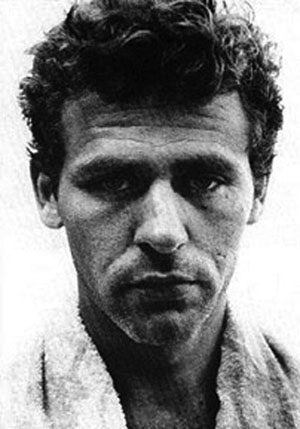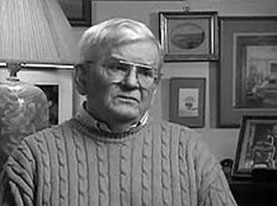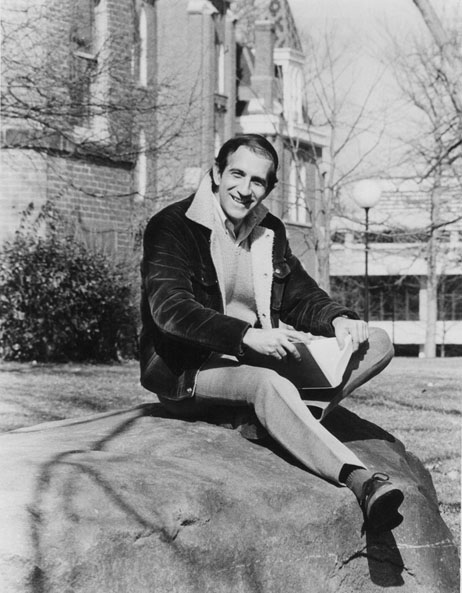This music was completed in the early Summer of 1979 and recorded on July 2nd, for the premiere performances on July 20th to the 28th at the John Michael Kohler Arts Center.
The orchestration for All The Way Home includes Flute, Harp, First Violins A and B, Second Violins A and B, Violas A and B and Cellos A and B.
The original performance program included the following:
FROM THE DIRECTOR’S CHAIR…
by Dr. Joseph Epolito
A theatre director could not help but feel enthusiastic about the opportunity to work on…the dramatic poignancy of ALL THE WAY HOME. This play, like the book from which it was derived, won the Pulitzer Prize. It was also awarded the Critics’ Circle Award and had a lengthy New York City run as well as innumerable productions throughout the nation.
The source of this later play is the novel, A DEATH IN THE FAMILY, by James Agee, a unique original talent who was essentially a poet.
‘Waking in darkness, he saw the window. Curtains, a tall, cloven wave, towered almost to the floor. Transparent, manifold, scalloped along their inward edges like the valves of a sea creature, they moved delectably on the air of the open window…
‘The light put the shadows of moving leaves against the curtains, which moved with the moving curtains and upon the base glass between the curtains…
‘Where the light touched the leaves they seemed to burn, a bitter green. Elsewhere they were darkest gray and darker. Beneath each of these thousands of closely assembled leaves dwelt either no natural light or richest darkness. Without touching each other these leaves were stirred as, silently, the whole tree moved in its sleep…he heard the summer night.’
Among the several challenges of this excellent material is to establish the locale, the milieu or (in directorial terms) the “imaginary circle” of the play. These visual aspects of a production are a primary concern of a director and one looks to the set/lighting designer and costumer for the realization of a concept.
‘On the rough wet grass of the back yard my father and mother have spread quilts. We all lie there, my mother, my father, my uncle, my aunt, and I too am lying there.
‘First we are sitting up, then one of us lay down, and then we all lay down, on our stomachs, or on our sides or on our backs, and they have kept on talking. They are not talking much and the talk is quiet, of nothing in particular, of nothing at all in particular, of nothing at all. The stars are wide and alive, they seem each like a smile of great sweetness, and they seem very near.’
A major excellence of this construct is the faithful manner in which the playwright has captured the complex personalities of the many characters who people the novel. Performers in ALL THE WAY HOME have multi-faceted, realistic yet theatrical, even contradictory natures to capture in performance. Each of the family members has a distinct and different relationship with each of the others. There can be no blanket attitude, but rather a separate reaction, a different point of view, for each character toward performer, to realize.
‘She lay somewhat comforted, but more profoundly disturbed than comforted. For she had never before so clearly put into words, into visible recognition, their religious differences. Is it for him, she wondered. And haven’t I terribly exaggerated my feeling of it? A “gulf”? And “widening”? Was it really? Certainly he never said anything that justified her in such a feeling; nor did she feel anything of that largeness. It was really only that both of them said so very little, as if both took care to say very little. But that was just it. That a thing which meant so much to her, so much more, all the time, should be a thing that they could not share, or could not be open about. Where her only close, true intimate was Aunt Hannah and her chief love and hope had to rest in the children. That was it. That was the way it seemed bound to widen (she folded her hands, and shook her head, frowning): It was the children.’
Lastly, (hardly, but just for purposes of this discussion) there is the dramatic action of the play. Through all its scenes that evidence - among many other actions - the bullying of a child by neighborhood children, tense hysteria upon receiving unsupportable news, sibling rivalry, marital discord, and so on, ALL THE WAY HOME always maintains a humanist view of the world; a view that implies that it is people and their inter-relating that guides lives and regulates us directly, regardless of sweeping changes in societal behavior and world affairs.
‘They listened most intently.
“I can’t hear anything,” Andrew whispered.
“Well, I do,” Hannah said, in a low voice. “Hear it or feel it. There’s...something.”
And again in silence they listened.
‘It began to seem to Mary, as to Hannah, that there was someone in the house other than themselves. She thought of the children; they might have waked up. Yet listening as intently as she could, she was not at all sure that there was any sound; and whoever or whatever it might be, she became sure it was no child, for she felt in it a terrible forcefulness, and concern, and restiveness, which were no part of any child.
“There is something,” Andrew whispered.
‘Whatever it might be, it was never for an instant at rest in one place. It was in the next room; it was in the kitchen; it was in the dining room.’
And it is that humanity that has always been at the core of good drama; in fact, it is the very impetus of theatre and continues to be its reason for existence.
James Agee Dr. Joseph Epolito Tad Mosel


